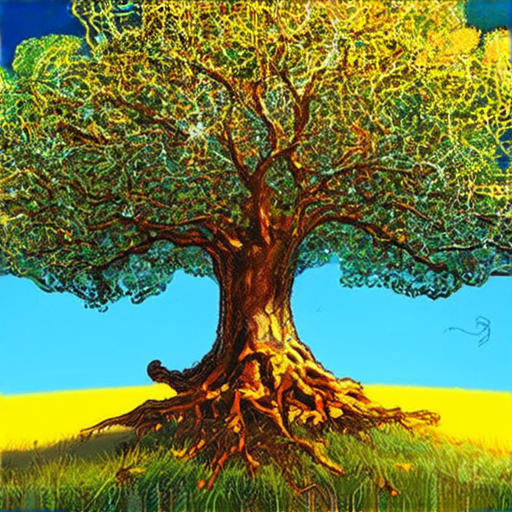In today’s world, where information spreads rapidly across various platforms, the power of storytelling has become a potent force for driving social change. Through media, individuals and organizations can raise awareness about pressing issues, mobilize communities, and inspire collective action towards creating a better world. But what exactly is media for social change? And how does it harness the power of storytelling to bring about meaningful transformations in society?

Media for Social Change
As a digital platform focused on grassroots activism, social justice, and alternative media, I believe that media plays a crucial role in driving social change.
- By amplifying marginalized voices and shedding light on pressing social issues, media can raise awareness and spark conversations that lead to meaningful action.
- Through storytelling and creative expression, media can humanize complex issues and inspire empathy, fostering a deeper understanding of the struggles faced by communities around the world.
- Moreover, media can serve as a powerful tool for mobilization, connecting people and organizations working towards common goals and facilitating collective action.
The Role of Media in Social Movements
From the Civil Rights Movement to Black Lives Matter, media has played a pivotal role in shaping social movements and bringing attention to critical issues.
- By leveraging social media platforms, activists and organizers can quickly disseminate information, mobilize support, and coordinate actions, amplifying their impact and reach.
- Traditional media outlets, such as newspapers and television stations, can also play a vital role in covering social movements and holding those in power accountable.
- However, it’s essential to recognize that media can also perpetuate systemic injustices and reinforce dominant narratives, highlighting the need for diverse perspectives and inclusive representation.
Examples of Media for Social Change
There are numerous examples of media initiatives that have driven social change, including:
- Common Dreams, a progressive news website that provides in-depth coverage of social and environmental issues.
- Telesur TV, a Latin American news network that offers a unique perspective on regional and global events.
- Al Jazeera, a Qatari-based news organization that provides independent coverage of international news and current events.
Conclusion
In conclusion, media has the power to shape public opinion, drive social change, and amplify marginalized voices.
As a digital platform committed to grassroots activism and social justice, I believe that it’s essential to harness the potential of media to create a more just and equitable world.
The Role of Media in Social Change
As a powerful tool for shaping public opinion and influencing societal norms, the media plays a crucial role in driving social change.
- Magnifying Marginalized Voices: The media provides a platform for marginalized communities to share their experiences and perspectives, raising awareness about social injustices and promoting empathy and understanding.
- Amplifying Grassroots Movements: By covering grassroots activism and social justice movements, the media helps to amplify the voices of ordinary people who are working towards positive change.
- Shaping Public Opinion: The media has the power to shape public opinion and influence how people think about complex social issues, such as racism, sexism, and climate change.
- Holding Power to Account: A free and independent media is essential for holding those in power accountable for their actions, exposing corruption and abuse of power.
Examples of Media’s Impact on Social Change
- The Black Lives Matter movement, which was sparked by the murder of Trayvon Martin and gained momentum through social media and traditional news outlets, highlights the media’s ability to amplify marginalized voices and bring attention to systemic injustices.
- The #MeToo movement, which began as a hashtag on Twitter and quickly spread to traditional news outlets, demonstrates the media’s power to raise awareness about social issues and hold perpetrators accountable.
- The environmental movement, which has been fueled by documentaries like “An Inconvenient Truth” and “Before the Flood,” shows how the media can educate the public about critical issues and inspire action.
Key Players in the Media Landscape
- Digital Platforms: Online platforms like 99 Percent Media, Medium, and Twitter have democratized access to media and created new opportunities for marginalized voices to be heard.
- Independent News Outlets: Independent news outlets like The Guardian, The New York Times, and ProPublica have maintained high standards of journalism and continue to hold those in power accountable.
- Grassroots Activists: Grassroots activists like Greta Thunberg, Malala Yousafzai, and Angela Davis have used the media to raise awareness about social issues and mobilize support for their causes.
Best Practices for Effective Media Engagement
- Stay Informed: Stay up-to-date with current events and social issues by following reputable news sources and engaging with diverse perspectives.
- Amplify Marginalized Voices: Use your platform to amplify the voices of marginalized communities and promote empathy and understanding.
- Support Independent Journalism: Support independent news outlets and journalists who are committed to holding those in power accountable.

How Is Social Media Used for Social Change?
Social media has become a powerful tool for driving social change, allowing individuals to mobilize support, raise awareness, and advocate for causes they care about.
-
Mobilizing Support
Social media platforms enable individuals to connect with others who share similar interests and passions, creating online communities that can mobilize support for social causes.
- Hashtags can be used to track conversations and trends related to social issues, making it easier to identify areas of concern and mobilize support.
- Online petitions and campaigns can be created and shared quickly, allowing individuals to take action and demonstrate their commitment to a cause.
-
Raising Awareness
Social media can be used to raise awareness about social issues, sharing personal stories, statistics, and other forms of content that highlight the need for change.
- Videos, images, and infographics can be used to convey complex information in an engaging and easily digestible format.
- Influencers and thought leaders can leverage their social media presence to amplify messages and reach wider audiences.
-
Advocating for Causes
Social media can be used to advocate for social causes, holding decision-makers accountable and pushing for policy changes.
- Twitter storms and online protests can be organized to raise awareness and pressure politicians into taking action.
- Facebook groups and online forums can be used to facilitate discussions and mobilize support for social causes.
By leveraging social media effectively, individuals and organizations can drive social change, promote equality and justice, and create a better world for all.
Examples of Successful Social Media Campaigns
- The #MeToo movement, which used social media to raise awareness about sexual harassment and assault.
- The Black Lives Matter movement, which used social media to mobilize support and advocate for racial justice.
- The Ice Bucket Challenge, which used social media to raise awareness and funds for ALS research.
Best Practices for Using Social Media for Social Change
- Identify your target audience and tailor your messaging accordingly.
- Use hashtags strategically to track conversations and trends.
- Leverage influencers and thought leaders to amplify your message.
- Create engaging content that resonates with your audience.
- Monitor and respond to feedback and criticism in a timely manner.

Is the Media a Vehicle of Social Change?
The media plays a pivotal role in shaping public opinion and influencing societal norms.
-
The media acts as a catalyst for social change by raising awareness about pressing issues, mobilizing public support, and holding those in power accountable.
-
Through various forms of media, including news outlets, social media platforms, and online publications, individuals can access information, share perspectives, and engage in discussions that drive social change.
Key Factors Contributing to the Media’s Role in Social Change:
-
Raising Awareness: The media brings attention to critical issues, such as human rights abuses, environmental degradation, and economic inequality, sparking conversations and inspiring action.
-
Mobilizing Public Support: By highlighting the struggles and triumphs of marginalized communities, the media fosters empathy and solidarity, encouraging people to get involved and advocate for positive change.
-
Holding Power Accountable: The media scrutinizes governments, corporations, and institutions, exposing injustices and promoting transparency, which helps to prevent abuse of power and promote accountability.
-
Fostering Critical Thinking: By presenting diverse perspectives and challenging dominant narratives, the media encourages critical thinking, nuance, and informed decision-making, empowering individuals to make a difference.
Examples of Successful Media-Driven Social Change:
-
The Black Lives Matter movement, sparked by widespread media coverage of police brutality and systemic racism, has led to increased awareness, protests, and policy reforms.
-
The #MeToo movement, fueled by social media and investigative journalism, has brought attention to sexual harassment and assault, leading to greater accountability and cultural shifts.
-
The climate change movement, amplified by media coverage of extreme weather events and scientific research, has prompted governments and corporations to take action and invest in renewable energy.
Conclusion:
The media is a powerful tool for driving social change by raising awareness, mobilizing public support, holding power accountable, and fostering critical thinking. As a catalyst for progress, the media empowers individuals to make a difference and creates a ripple effect that can lead to lasting impact.
The Impact of Media on Society
We live in a world where media plays a significant role in shaping our thoughts, attitudes, and behaviors.
-
Media influences our perceptions of reality, often presenting us with curated versions of events and experiences.
-
Through various forms of media, we gain access to diverse perspectives and ideas, broadening our understanding of the world and its complexities.
-
However, excessive exposure to certain types of media can have negative consequences, such as desensitizing us to violence or promoting unrealistic beauty standards.
Mass Media and Social Change
Mass media has been instrumental in driving social change throughout history, from the civil rights movement to contemporary activism.
-
Platforms like 99 Percent Media amplify marginalized voices and provide a space for grassroots activism and social justice advocacy.
-
By covering underreported stories and highlighting pressing social issues, media outlets like ours raise awareness and inspire collective action.
-
Moreover, social media has democratized the dissemination of information, enabling individuals to share their experiences and connect with others around the globe.
The Role of Media in Shaping Public Opinion
Media plays a crucial role in shaping public opinion, influencing how we perceive and respond to various issues.
-
News outlets and journalists shape our understanding of current events, often framing narratives and setting agendas.
-
Social media platforms further complicate the landscape, allowing individuals to curate their own news feeds and engage in online discussions.
-
Ultimately, it is essential to critically evaluate the information we consume, recognizing the potential biases and limitations of different media sources.
Conclusion
In conclusion, media has a profound impact on our society, influencing everything from our perceptions of reality to our participation in social change.
As consumers of media, it is essential to remain aware of these dynamics, critically evaluating the information we consume and engaging with diverse perspectives.
By doing so, we can harness the power of media to drive positive change and foster a more informed, empathetic, and engaged global community.

Drivers of Social Change
Social change refers to significant alterations in societal norms, values, institutions, and power structures.
-
Demographic Factors
Population growth and composition play a crucial role in driving social change.
- Age: Shifts in age demographics can lead to changes in societal values and priorities.
- Race and ethnicity: Increasing diversity can result in greater cultural exchange and understanding.
- Urbanization: As people move from rural to urban areas, they bring with them new ideas and perspectives.
-
Cultural and Technological Advancements
The rapid pace of technological advancements has led to significant changes in how we communicate, access information, and interact with one another.
- Global connectivity: The internet and social media have connected people worldwide, facilitating global communication and collaboration.
- Information dissemination: The widespread availability of information has empowered individuals to make informed decisions and take action on various social issues.
- Cultural exchange: The ease of travel and communication has enabled people to share and adopt new customs, traditions, and values.
-
Natural Environment and Resource Management
The impact of human activities on the environment has become increasingly apparent, driving social change and awareness.
- Climate change: Rising temperatures and extreme weather events have prompted governments and individuals to reassess their relationship with the environment.
- Resource depletion: Concerns over water scarcity, deforestation, and pollution have led to increased efforts to conserve and manage natural resources sustainably.
- Ecosystem preservation: Growing recognition of the importance of preserving biodiversity and ecosystems has resulted in initiatives to protect and restore natural habitats.
-
Social Conflict and Activism
Social movements and activism have long been catalysts for social change, pushing for reforms and challenging existing power structures.
- Movements for equality: Campaigns for women’s rights, racial equality, and LGBTQ+ rights have led to significant advances in social justice.
- Environmental activism: Grassroots movements have pressured governments and corporations to adopt sustainable practices and reduce their environmental footprint.
- Peace and disarmament: Efforts to promote peace and disarmament have contributed to reduced conflict and improved international relations.
These factors intersect and influence one another, driving complex and multifaceted social change.

0 Comments